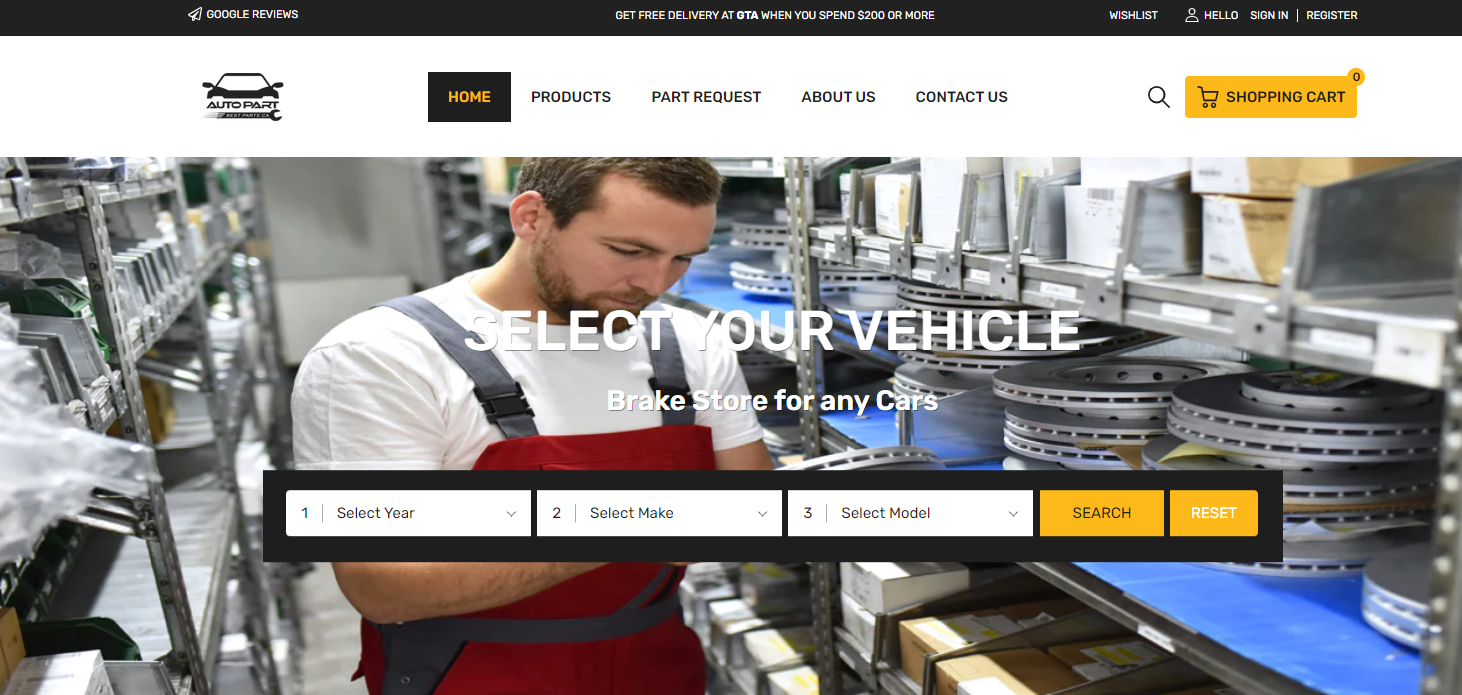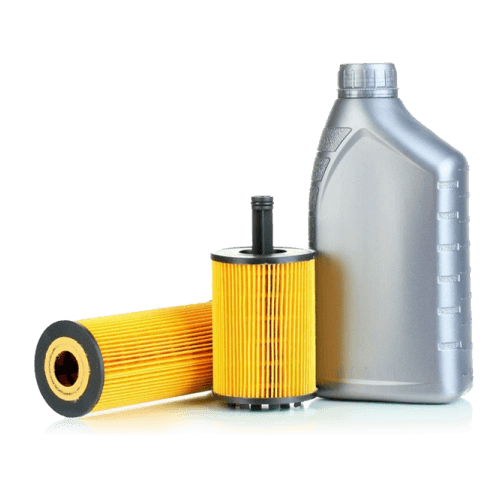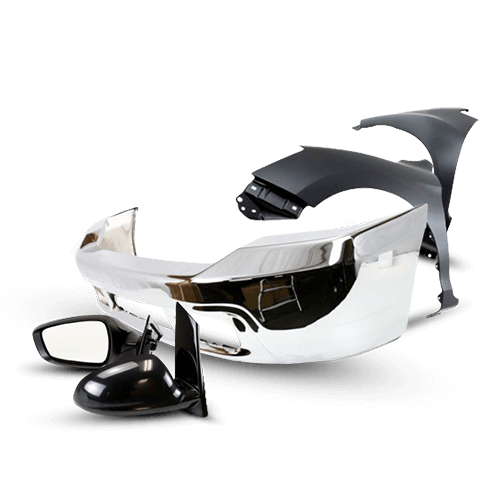
Everything you need to know about Brake Pads
The brake pad is an unsung hero who plays an important role in keeping us safe in modern transportation, where vehicles speed along highways and city streets. These seemingly insignificant components are central to your vehicle's ability to stop reliably and quickly when required. But how well do you understand brake pads?
Welcome to a comprehensive guide that delves deep into the world of brake pads. Whether you're a seasoned gearhead or a new driver, understanding the ins and outs of these critical parts is essential for your safety and the longevity of your vehicle. In this journey, we'll explore every facet of brake pads, from their fundamental purpose to the factors that influence their durability. So prepare to learn everything you need to know about brake pads so you can navigate the road ahead with confidence and peace of mind.
What are Brake Pads?
Giving a general definition of brake pads at the outset of the article "everything you need to know about brake pads" is more beneficial. Brake pads are an essential part of your vehicle's braking system. They are typically flat, rectangular plates of friction material bonded to a metal backing plate. When you apply pressure to the brake pedal, the brake caliper squeezes the brake pads against the brake rotor, causing friction and slowing or stopping your vehicle.

How Long is the Life of Brake Pads?
The lifespan of brake pads can vary widely based on various factors, making it challenging to pinpoint an exact duration. On average, brake pads tend to last between 30,000 and 70,000 miles, but individual experiences can differ significantly. Several factors influence their longevity.
Firstly, driving habits play a crucial role. Aggressive driving, frequent hard braking, or riding the brakes can wear out brake pads more quickly. Smooth and gentle braking can help extend their lifespan. Secondly, road conditions are a significant factor. Frequent stop-and-go traffic or hilly terrain can accelerate brake pad wear. Additionally, the type of brake pad material used, vehicle weight, brake pad quality, climate, and regular maintenance all contribute to the overall lifespan of brake pads.
To ensure safety, it's vital to monitor your vehicle's brake performance and replace brake pads when they show signs of wear, as ignoring this maintenance can lead to reduced braking efficiency and potentially hazardous driving conditions.
read more: Several important reasons to replace the brake pads
Factors Affecting the Durability of Brake Pads
The longevity of your brake pads depends on several key factors. Understanding these factors can help you take proactive measures to extend the life of your brake pads and ensure your vehicle's safety. We have mentioned some of these factors below:
1. The Weight of Your Car
One of the primary factors influencing brake pad durability is the weight of your vehicle. Heavier vehicles, such as trucks and SUVs, exert more force on the braking system when coming to a stop. This increased pressure can lead to faster wear and tear on the brake pads. It's essential to consider your vehicle's weight when assessing how long your brake pads are likely to last.
2. Where You Drive
Your driving habits and the conditions in which you drive can significantly impact brake pad longevity. City driving with frequent stops and traffic congestion can accelerate brake pad wear. In contrast, highway driving with fewer stops and less aggressive braking can help extend their lifespan. If your daily commute involves a lot of stop-and-go traffic, it's important to be vigilant about brake pad maintenance.

3. Your Driving Style
Your driving style also plays a role in brake pad wear. Frequent hard braking, such as slamming on the brakes at the last moment, generates more heat and friction, causing the pads to wear down faster. To extend the life of your brake pads, practice smooth and gradual braking whenever possible. Anticipate stops and decelerate gradually, as this can reduce the strain on your braking system.
4. The Type of Brake Pads
The type of brake pads you choose for your vehicle can significantly affect their durability. There are three main types of brake pads: organic, semi-metallic, and ceramic. Each type has its advantages and disadvantages in terms of wear and performance. Ceramic brake pads, for example, are known for their longer lifespan and lower noise levels. When selecting brake pads, consider your driving needs and preferences to make an informed choice.
5. Brake Pad Quality
The quality of the brake pads themselves is another important factor. High-quality brake pads tend to last longer and perform better under various conditions. While they may come with a slightly higher price tag, investing in quality brake pads can pay off in terms of extended durability and improved braking performance.
In conclusion, several factors, including the weight of your car, your driving habits, the type of brake pads you choose, and their quality, can impact the durability of brake pads. Regular maintenance, such as inspecting and replacing worn brake pads, can help ensure your vehicle's safety and extend the life of this critical component. By understanding these factors and taking proactive measures, you can enjoy safer and more reliable braking performance in your vehicle.
What are the Types of Brake Pads?
When it comes to your vehicle's braking system, not all brake pads are created equal. There are several types of brake pads available on the market, each with its own set of characteristics, advantages, and disadvantages. Understanding the differences between these types can help you make an informed decision when it's time to replace your brake pads. Let's explore the three main types:
1. Organic Brake Pads:
Organic brake pads, often referred to as Non-Asbestos Organic (NAO) brake pads, are made from a combination of organic materials such as rubber, carbon, and glass. These materials are bonded together and then molded into the familiar pad shape. Organic brake pads are known for their:
- Quiet Operation: They produce minimal noise when braking, making them a popular choice for everyday driving.
- Smooth Engagement: Organic pads provide smooth and gradual brake engagement, contributing to a comfortable driving experience.
- Gentle on Rotors: They are less abrasive on the brake rotors, which can help extend rotor life.
However, organic brake pads also have some drawbacks:
- Wear Rate: They tend to wear out more quickly than other types, especially under heavy braking or high-temperature conditions.
- Dust Production: Organic pads may produce more brake dust, which can lead to dirty wheels and require more frequent cleaning.

2. Semi-Metallic Brake Pads:
Semi metallic brake pads contain a mixture of organic materials and metal fibers, typically made from steel. These pads offer a balance between performance and durability. Their key characteristics include
- Excellent Heat Dissipation: The metal content helps dissipate heat generated during braking, making them suitable for high-performance and heavy-duty applications.
- Strong Braking Performance: Semi-metallic pads provide robust stopping power, making them ideal for towing or vehicles with heavier loads.
- Longer Lifespan: They generally have a longer lifespan than organic pads, especially in demanding driving conditions.
However, semi-metallic brake pads also have some drawbacks to consider:
- Noise and Vibration: They can be noisier and may generate more vibration during braking, particularly in cold weather.
- Rotor Wear: Due to their abrasive nature, semi-metallic pads can cause more wear on the brake rotors, potentially necessitating more frequent rotor replacement.
3. Ceramic Brake Pads:
Ceramic brake pads are the third type and are known for their premium characteristics. They are composed of ceramic fibers, filler materials, and bonding agents. Ceramic pads offer the following benefits:
- Low Noise and Dust: Ceramic pads produce minimal noise and dust, keeping your wheels cleaner and providing a quieter ride.
- Smooth Braking: They offer smooth and consistent brake engagement, contributing to a comfortable driving experience.
- Long Lifespan: Ceramic brake pads tend to last longer than organic and semi-metallic pads, making them a cost-effective choice in the long run.
However, ceramic brake pads also have some considerations:
- Higher Cost: They are typically more expensive than other types of brake pads.
- Performance Limitation: While they perform well in most situations, they may not provide the same extreme high-temperature performance as semi-metallic pads in intense driving conditions.
When selecting brake pads, it's essential to consider your driving needs, preferences, and budget. Consulting your vehicle's manual and seeking advice from a professional mechanic can help you choose the right type of brake pads to ensure safe and efficient braking performance for your specific vehicle and driving style.
When Should We Replace Our Brake Pads?
Knowing when to replace your brake pads is crucial for your safety and the longevity of your vehicle's braking system. Here are some signs that indicate it's time for a replacement:

Warning Light
Modern vehicles often have a dashboard warning light that illuminates when the brake pads are worn. If this light comes on, it's time to have your brake pads inspected.
Visual Check
You can visually inspect your brake pads by looking through the wheel spokes. If the pad thickness is less than a quarter of an inch, it's time for a replacement.
Loud Screeching
A high-pitched screeching sound when you apply the brakes is a clear sign that the brake pads are worn down. Don't ignore this noise; it's time for a replacement.
Pulling to One Side
If your vehicle pulls to one side when you apply the brakes, it could indicate uneven brake pad wear. This should be addressed promptly to prevent further damage.
How to Increase the Life of Brake Pads?
Brake pads are a vital component of your vehicle's braking system, and their longevity is crucial for your safety on the road. While brake pads have a finite lifespan, there are steps you can take to maximize their durability and get the most out of them. Here are some tips on how to increase the life of your brake pads:
Choose the Right Brake Pads
When it's time to replace your brake pads, consider choosing high-quality brake pads that are suited for your vehicle and driving style. Premium brake pads may cost slightly more but can provide longer life and better performance.
Coasting Whenever Possible
Another strategy to reduce wear on your brake pads is to coast whenever possible. Coasting involves lifting your foot off the accelerator and allowing your vehicle to slow down naturally, especially when approaching a red light, stop sign, or a slowdown in traffic. By coasting, you reduce the need for heavy braking and the associated wear on the brake pads.
Brake Fluid Maintenance
Regular brake fluid maintenance is essential for the proper functioning of your braking system and can indirectly help extend the life of your brake pads. Brake fluid absorbs moisture over time, which can lead to reduced braking performance and increased heat generation. Regularly check and replace your brake fluid according to your vehicle manufacturer's recommendations to maintain optimal braking performance.
Avoid Overloading Your Vehicle
Overloading your vehicle with excessive cargo or passengers can increase the strain on your brake pads. The added weight requires more braking force to stop the vehicle, causing increased wear on the pads. Be mindful of your vehicle's weight limits and avoid exceeding them.
Avoid Hard Braking
One of the most effective ways to extend the life of your brake pads is to avoid hard or aggressive braking whenever possible. When you slam on the brakes, it generates a significant amount of heat and friction, causing the brake pads to wear down faster. Instead, practice smooth and gradual braking. Anticipate stops and start slowing down early, giving yourself plenty of time to come to a stop without the need for heavy braking.

Regular Brake Inspections
Schedule regular brake inspections with a qualified mechanic. They can assess the condition of your brake pads, brake rotors, and other components. Identifying and addressing issues early can prevent more extensive and costly repairs in the future.
How Long is the Life of the Brake Disc?
The lifespan of brake discs, also known as brake rotors, can vary widely. On average, they can last between 30,000 to 70,000 miles. Regular maintenance and proper use of brake pads can help prolong their life.
When Do Brake Discs Need to be Repaired?
Brake discs should be inspected regularly. If you notice any grooves, cracks, or excessive wear on the disc's surface, it's time for repairs or replacement. Additionally, if your vehicle vibrates or shudders when you apply the brakes, it could indicate an issue with the brake discs.
How to Buy New Brake Pads?
When it's time to replace your brake pads, it's crucial to choose the right ones for your vehicle. Consult your vehicle's manual or seek advice from a professional mechanic to ensure you select the appropriate brake pads for your make and model.
How to Measure the Thickness of the Brake Note?
Measuring the thickness of brake pads is relatively simple. You can use a brake pad wear gauge or a ruler to measure the pad's thickness. If it's nearing the manufacturer's recommended minimum thickness, it's time for a replacement.

Conclusion
You should know by the end of the article "Everything you need to know about brake pads" that brake pads are an important safety component of your vehicle. Regular inspection and maintenance are required to ensure proper operation. Knowing the symptoms of worn brake pads and how to extend their life can help keep you safe on the road. Keep in mind that you can easily purchase high-quality brake pads for your vehicle from the Best Part online store. Purchase your desired brake pads now!
FAQs
- Can I drive with worn brake pads?
Driving with worn brake pads is risky and can result in brake failure. It is critical to replace them as soon as they begin to show signs of wear.
- Do ceramic brake pads last longer?
Yes, ceramic brake pads tend to have a longer lifespan compared to organic or semi-metallic pads.
- How often should I have my brake pads inspected?
It's best to have your brake pads checked at least once a year or every 12,000 miles, whichever comes first.
- What should I do if my vehicle's warning light for brake pads comes on?
If the warning light comes on, it's advisable to have your brake pads inspected by a professional mechanic as soon as possible.























































